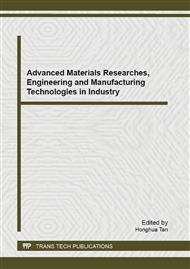p.600
p.606
p.611
p.618
p.622
p.626
p.632
p.638
p.644
Seepage Stability Analysis for Surrounding Rock Mass of Diversion Tunnel by FEM
Abstract:
Based on the actual conditions of the project and related experience, the seepage model of diversion tunnel and its surrounding rock mass was built to analyze its seepage stability. The seepage field was calculated by using finite element method (FEM) and cut-off negative pressure method. Two typical cross-sections and working conditions were chosen to evaluate the seepage stability of the surrounding rock mass. According to the results, the seepage gradient is larger when one tunnel is filled with water while the other is empty. The maximum seepage gradient is less than the allowable seepage gradient, so the surrounding rock mass of the diversion tunnel can meet the demand of seepage stability.
Info:
Periodical:
Pages:
622-625
Citation:
Online since:
September 2013
Authors:
Price:
Сopyright:
© 2013 Trans Tech Publications Ltd. All Rights Reserved
Share:
Citation:


